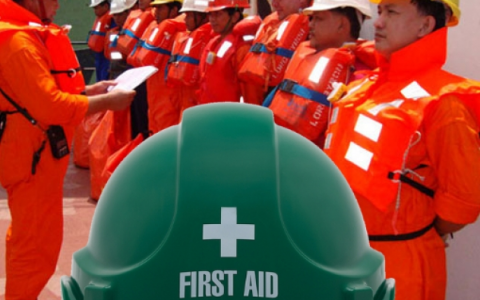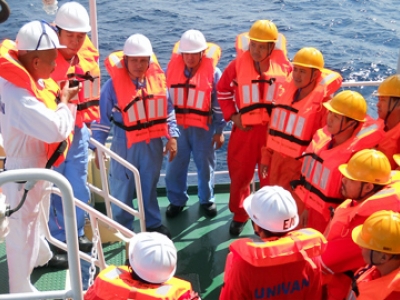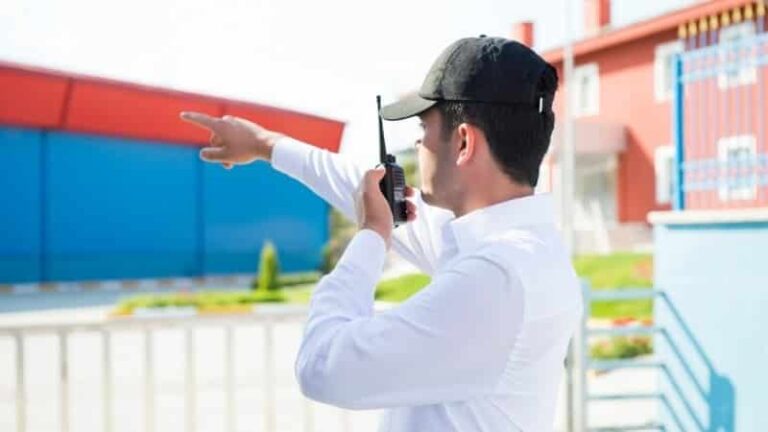Below is the list of questions being asked in Director General of Shipping Exit exam of Medical First Aid (MFA) / Refresher MFA (RMFA) Exit exam. These questions are very frequently asked during Director General of Shipping Exit exam. Prepare well for these exit exams so that you don’t waste time and money by again appearing for these exams.
Questions have been compiled as per feedback given by many candidates. You can also contribute by suggesting questions in the comments box.
Ques 1. The acronyms SAMPLE stand for signs and symptoms, allergies, medications, past history and events.
A) Location of pain.
B) Last bowel movement.
C) Last meal.
D) Latest related injury.
Answer : C
Ques 2. Which one of the following is not a system of the body:
A) Respiratory.
B) Musculoskeletal.
C) Endocrine.
D) Follicular.
Answer : D
Ques 3. Increased respiratory difficulty accompanied by a weak ineffective cough, wheezing, high-pitched crowing noises, and cyanosis are signs of:
A) Mild airway obstruction
B) C.O.P.D.
C) Severe airway obstruction.
D) Complete airway obstruction.
Answer : C
Ques 4. The most important step in managing shock is to:
A) Keep the patient warm.
B) Give CPR as soon as possible.
C) Give first aid for the illness soar injury.
D) Elevate the lower extremities.
Answer : C
Ques 5. A small percentage of casualties with chronic obstructive pulmonary disease have a hypoxic drive. These patients breathe because of a:
A) High oxygen level.
B) Low oxygen level.
C) High carbon dioxide level.
D) Low carbon dioxide level.
Answer : B
Ques 6. The emergency responder is one link in the chain of services known as the:
A) Emergency Patient Care (EPC) system.
B) Emergency Medical Services (EMS) system.
C) Professional Emergency Care (PEC) system.
D) Community Medical Care (CMC) system.
Answer : B
Ques 7. The acronym used to assist the emergency responder assessing the patient’s level of responsiveness is:
A) SAMPLE.
B) EMCA.
C) OPQRST.
D) AVPU
Answer : D
Ques 8. An industrial worker sustains a severe laceration to his forearm. Direct pressure to the wound fails to control the bleeding. The correct arterial pressure point to control the bleeding is the:
A) Carotid.
B) Radial.
C) Femoral.
D) Brachial.
Answer : D
Ques 9. Pressing on a fingernail-bed to observe the return of normal color is done to check for:
A) Normal blood circulation to that part.
B) The presence of fractured fingers.
C) Pain in the area.
D) A lack of oxygen in the blood.
Answer : A
Ques 10. Your primary survey of a casualty involved in a serious car collision shows only that he is confused. Later you find his pulse rate at 140 and weak, his skin cold and clammy and his breathing irregular and gasping. These signs, along with the mechanism of injury, indicate:
A) An oncoming faint.
B) Emotional stress.
C) Internal bleeding.
D) Onset of diabetic coma
Answer : C
Ques 11. For which one of the following in factious diseases is a vaccine presently available:
A) Herpes.
B) AIDS.
C) Mononucleosis.
D) Hepatitis B.
Answer : D
Ques 12. Based on current research, which of the following statements about the AIDS virus is correct?
A) It can be found in blood and semen.
B) It can be transmitted by sharing eating utensils.
C) It can be transmitted by shaking hands.
D) It can be found in perspiration.
Answer : A
Ques 13. In a hazmat situation air way management and immobilization are carried out in the:
A) Hot zone
B) Warm zone
C) Cold zone
D) Neutral zone
Answer : B
Ques 14. During the primary assessment of a responsive adult patient, you detect a breathing rate of 28 breaths per minute. You would categorize this as:
A) Above normal.
B) Below normal.
C) Normal.
D) Indeterminate
Answer : A
Ques 15. A blood-soaked dressing on the arm indicates that bleeding has not yet been controlled. You should now:
A) Remove the dressing and check the wound.
B) Apply pressure to the femoral artery.
C) Place a clean dressing on top and apply more pressure.
D) Apply a tourniquet.
Answer : C
Ques 16. The type of shock that is caused by a severe infection is called:
A) Septic.
B) Psychogenic.
C) Cardiogenic.
D) Hemorrhagic.
Answer : A
Ques 17. Which one of the following is considered a breach of duty:
A) Failure to obtain consent.
B) Failure to wear your nametag.
C) Inappropriate use of lights and siren.
D) In subordination.
Answer : A
Ques 18. Immediately before a seizure, the patient experiences an unpleasant ode our. This phase is referred to as:
A) Clonic.
B) Aura.
C) Tonic.
D) Postical.
Answer : B
Ques 19. The emergency responder should assume a head/spinal injury in any Un witnessed situation where the patient is:
A) Alert.
B) Responsive to pain.
C) Not breathing.
D) Unresponsive.
Answer : D
Ques 20. The secondary assessment of the patient consists of a head to toe examination and a check of
A) Pressure points.
B) Procedures for administering CPR.
C) Manual stabilization of the head.
D) Vital signs.
Answer : D
Ques 21. You are taking blood pressure by palpation. A radial pulse indicates a blood pressure of at least:
A) 110mmHg
B) 100mmHg
C) 90mmHg
D) 80mmHg
Answer : D
Ques 22. You are called for an asthma attack, treatments may include all except:
A) Metered dose inhaler
B) Bronchodilators
C) Nitroglycerin
D) In haled steroids
Answer : C
Ques 23. Into graphic anatomy, the term “lateral” means:
A) Nearer the midline of the body.
B) Away from the midline of the body.
C) Nearer the head.
D) Away from the head.
Answer : B
Ques 24. Which one of the following conditions may mimic the signs of acute alcohol intoxication?
A) Hypoglycemia
B) Congestive heart failure.
C) Absence seizures.
D) Anaphylactic shock.
Answer : A
Ques 25. Which one of the following breathing diseases is included in C.O.P.D.:
A) Croup.
B) Hyperventilation
C) Emphysema.
D) Dyspnea
Answer : C
Ques 26. A condition where air build up in the pleural space, collapses the lung and puts pressure on the heart is called:
A) Closed pneumothorax
B) Tension pneumothorax
C) Hemo thorax
D) Open pneumothorax
Answer : B
Ques 27. Oxygen humidification is recommended if you are administering oxygen for longer than:
A) 15minutes.
B) 30minutes.
C) 60minutes
D) 90minutes.
Answer : B
Ques 28. You find a male patient with obvious difficulty breathing. He is using his neck muscles, and is cyanotic. There are red blotches on his chest, and his neck is swelling. You suspect:
A) Anaphylaxis.
B) Bronchitis.
C) Emphysema.
D) Asthma.
Answer : A
Ques 29. When you are giving mouth-to-nose AR, you should:
A) Hold the casualty’s mouth closed.
B) Pinch the nostrils closed before blow impairs into the casualty.
C) Tilt the head back less than for the mouth-to-mouth method of AR.
D) Keep the mouth and nose closed between breaths.
Answer : A
Ques 30.A rapid body survey should take no longer than:
A) 30seconds
B) 45seconds
C) 60seconds
D) 90seconds
Answer : A
Ques 31. During one-rescuer CPR for adults, the ratio of compressions to ventilations should be:
A) 5:1
B) 15:2
C) 30:2
D) 35:2
Answer : C
Ques 32. To correctly size an or pharynx geal airway place the flange at the corner of the mouth with the tip reaching:
A) The angle of the patient’s jaw
B) The top of the patient’ sear
C) The patient’ sea robe
D) Two-finger width from the flange.
Answer : C
Ques 33. A guideline for normal systolic blood pressure in an adult male would be:
A) 50plustheman’sageupto150mm. Hg.
B) 65plustheman’sageupto120mm. Hg.
C) 80plustheman’sageupto130mm. Hg.
D) 100plustheman’sageupto150 mm.Hg.
Answer : D
Ques 34. A should be offered to the patient with chest pain who is taking nitroglycerin:
A) Before the first dose of nitro
B) After the first dose of nitro
C) After the second dose of nitro
D) After the third dose of nitro
Answer : B
Ques 35. When suctioning an on-breathing adult casualty, a first aider should:
A) Apply suction as soon as the suction tip touches the mouth.
B) Insert the suction tip deep into the larynx.
C) Suction for no more than 15seconds.
D) Insert the tip with the curved side towards the tongue.
Answer : C
Ques 36. A flail chest results when:
A) Three ribs are broken on each side of the chest.
B) Part of the spine becomes separated from the ribs.
C) The breastbone is broken in three places.
D) Several ribs are broken in more than one place.
Answer : D
Ques 37. Which of the following devices provides the highest percentage of O2delivery?
A) Nasal cannula.
B) Plastic facemask.
C) Partial rebreathing mask.
D) Non-rebreathing mask.
Answer : D
Ques 38. Status epileptics refer to:
A) Normal seizure patters nine epilepsy.
B) Seizures are caused by a high fever.
C) Continuous seizure activity.
D) Seizures lasting longer than2 minutes.
Answer : C
Ques 39. You suspect a patient’s pain is due to my cordial infraction rather than angina because of the pain:
A) Is under the sternum.
B) Radia test to heck, jawan’s arms.
C) Is no relieved by rest or medication.
D) Lasts for about 3minutes.
Answer : C
Ques 40. OPQRST is used to assess:
A) Pain
B) Level of consciousness
C) Vision
D) Hearing
Answer : A
Ques 41. The recommended oxygen flow rate for nasal cannulae (nasal prongs)is:
A) 1-6litres/min.
B) 6-8litres/min.
C) 8-12litres/min.
D) 10-15litres/min.
Answer : A
Ques 42. When aligning the head in the eyes-front neutral position, watch for:
A) Pulse, movement, sensation.
B) Crepitus, pain, resistance.
C) Pain, circulation, retention.
D) Tingling, numbness, paralysis.
Answer : B
Ques 43. To prepare a completely amputated part of the body for transportation to hospital with the casualty, you should:
A) Place it in a clean plastic bag filled with cold water.
B) Wrap it in clean, moist dressings and keep it cool.
C) Wash it off and place it into a bag of crushed ice.
D) Wrap it in clean, moist dressing sand keep it at body temperature.
Answer : B
Ques 44. Hypovolemic shock results from:
A) The body’s reaction to a foreign protein.
B) An overdose of insulin.
C) Toxins are produced by a severe infection.
D) Decreased volume of the blood.
Answer : D
Ques 45. Manual support of the head and neck of the patient with suspected spinal injury can be released:
A) Once the breathing has been checked.
B) When a hard collar has been applied.
C) If the patient is unconscious.
D) When the patient is fully immobilized to a backboard.
Answer : D
Ques 46. A conscious casualty who has suffered a stroke becomes unconscious. To keep his airway open and help him breathe, you should:
A) Turn him into the recovery position with his unaffected side down.
B) Place him in a semi-sitting position.
C) Turn him into the recovery position with his unaffected side up.
D) Place him on his back.
Answer : A
Ques 47. A worker has fallen from a six-foot ladder onto a concrete floor. Your first action should be.
A) Take a SAMPLE history.
B) Perform a secondary survey.
C) Take charge and perform a scene survey.
D) Assess the rate and quality of breathing.
Answer : C
Ques 48. The correct ratio of compressions to ventilations for two -rescuer CPR on a child is:
A) 5:1
B) 15:2
C) 5:2
D) 15:1
Answer : B
Ques 49. To determine whether the ac-spine injury has occurred, you should think about the Mechanism of Injury. This can best be described as:
A) The force that causes the injury and the way it acts on the body.
B) The circumstances after the injury.
C) The weather conditions at the time of the incident.
D) The area of the body that is injured
Answer : A
Ques 50. Shock is best defined as:
A) Inadequate circulation to the body’s tissues
B) Inadequate delivery of oxygen to the lungs
C) Inadequate elimination of waste products from the body.
D) Inadequate amount of insulin.
Answer : A
Ques 51. The most critical factor in defibrillation is:
A) The time from collapse to defibrillation.
B) The skill of the AED responder.
C) The patient’s previous cardiac history.
D) The type of defibrillator used.
Answer : A
Ques 52. The AED will shock a patient:
A) With a sinus rhythm.
B) In asystole
C) In ventricular fibrillation.
D) With pulseless electrical activity (PEA).
Answer : C
Ques 53. When transporting a patient, a shock should be administered:
A) Only in a vehicle that is properly grounded.
B) Whenever the machine indicates shock necessary.
C) When the vehicle is stopped.
D) When the vehicle is traveling at less than 20 km per hour.
Answer : C
Ques 54. When using an AED on a patient who is wearing a pacemaker, place the electro depends:
A) Directly on a pacemaker.
B) Two inches away from the pacemaker.
C) Within one inch of the pacemaker.
D) At least one inch away from the pacemaker.
Answer : D
Ques 55. In the hypothermic patient, you should limit the number of shocks to a maximum of:
A) 1.
B) 2.
C) 3.
D) 4.
Answer : A
Ques 56. You have shocked a casualty and there are signs of circulation. You should:
A) Remove the AED from the scene.
B) Leave the AED attached to the casualty.
C) Disconnect the cables from the AED.
D) Remove the pads from the chest.
Answer : D
Ques 57. The most immediate serious complication associated with burns:
A) Shock
B) Infection
C) Scarring
D) Hypothermia
Answer : A
Ques 58. Burns that involve all layers of the skin is:
A) Superficial
B) Partial-thickness.
C) Full-thickness.
D) First degree.
Answer : C
Ques 59. A man is filling a gas tank on a generator when it bursts into flames. The casualty has a hoarse voice, he is blistered around the mouth and nose and both arms are reddened. You should classify this burn as:
A) Critical
B) Superficial
C) Moderate
D) Minor
Answer : A
Ques 60. The body surface burned the area of the palm of the hand represent % of the body surface.
A) One
B) Two
C) Five
D) Nine
Answer : A
Ques 61. An abrasion is:
A) Deep break in the skin involving significant bleeding.
B) Partial or complete loss of a body part
C) Objects through soft tissue.
D) The result of a sharp as crape or rubbing a way of the epidermis
Answer : D
Ques 62. A soft tissue injury resulting from the impact of a blunt object is called:
A) A laceration.
B) An avulsion.
C) A contusion.
D) A concussion.
Answer : C
Ques 63. Tetanus is a condition:
A) That involves specific infection in the lower jaw.
B) That only occurs in the third world.
C) that is caused by a virus
D) That can be prevented by immunization.
Answer : D
Ques 64. The acronym SHARP refers to:
A) The assessment of the severity of a wound injury.
B) Signs and symptoms are used to determine the need to transport.
C) The depth of a penetrating wound and potential damage.
D) Signs of infection as assessed in wound injuries.
Answer : D
Ques 65. Which one of the following factors increases the risk of life-threatening injury:
A) High velocity.
B) Low-velocity.
C) High density.
D) Low energy
Answer : A
Ques 66. Responders involved in wound management should consider:
A) Wounds should be thoroughly flushed to prevent infection.
B) All open wounds are contaminated to some degree.
C) The risk of infection continues until the wound is dressed and bandaged.
D) Gloves should be worn if you suspect the patient may be ill.
Answer : B
Ques 67. Which action is part of first aid for a nose bleed?
A) Place an ice-pack on the back of the neck.
B) Plug the nose with gauze.
C) Lean forward and firmly pinch the soft parts of the nose.
D) Lean the casualty backward in a sitting position.
Answer : C
Ques 68. To prevent further contamination and infection of the wound, you should cleanse the surrounding skin by:
A) Swabbing in circular motions around the wound.
B) Wiping lightly over the edges of the wound.
C) Swabbing from one side of the wound to the other.
D) Wiping away from the edges of the wound.
Answer : D
Ques 69. To prevent further contamination and infection of the wound, you should cleanse the surrounding skin
A) Swabbing in circular motions around the wound.
B) Wiping lightly over the edges of the wound.
C) Swabbing from one side of the wound to the other.
D) Wiping away from the edges of the wound.
Answer : D
Ques 70. If it becomes necessary to thaw a hand with deep frostbite you should ensure that:
A) The patient sees a doctor no later than 48 hrs after thawing
B) There is no danger of refreezing
C) Adequate pain relief medication is available
D) Capillary refill takes no longer than 15seconds
Answer : B
Ques 71. You have been called for an 81-year-old unconscious male patient. He is in his living room. Despite the hot day, his overly dressed. He is flushed and dry, extremely hot to touch. You suspect:
A) Heat exhaustion.
B) Stroke.
C) Hyperglycemia.
D) Heatstroke.
Answer : D
Ques 72. The body loses heat in a variety of ways including:
A) Radiation, conduction, evaporation and respiration.
B) Radiation, refrigeration, evaporation and conduction.
C) Hyperglycemia.
D) Heatstroke
Answer : A
Ques 73. Body mechanics refers to:
A) Positioning and movement of the body
B) Number of rescuers needed to move a patient
C) A type of rescue carries
D) A special device to lift heavy load
Answer : A
Ques 74. You are alone and must remove a casualty with a suspected spinal injury from a very hazardous situation. You should
A) Grab his wrists and drag him length-wise.
B) Keep his body rigid, support his head and neck and roll him away from the scene.
C) Tie his legs together and drag his feet first.
D) Grasp his clothing under his shoulders, support his head and neck, and drag him lengthwise.
Answer : D
Ques 75. To safely perform a chair carry you need
A) 2 rescuers
B) 3 rescuers
C) 4 rescuers
D) 5 rescuers
Answer : B
Ques 76. After discovering a possible fracture you should assess which of the following before and after Splinting:
A) Sensation, morbidity, protrusion.
B) Capillary refill, pulse, sensation.
C) Pulse, motor function, sensation.
D) Crepitus, resistance, pain.
Answer : C
Ques 77. A worker has had hish and caught in a car door. You suspect several fractured bones in the hand. The hand should be splinted:
A) Conduction, convection, evaporation, and refrigeration.
B) Submersion, convection, radiation and respiration.
C) Flat against the splint.
D) In a tight fist position.
Answer : C
Ques 78. Crepitus is:
A) Poor distal circulation
B) A grating sound caused by bone ends rubbing together
C) A type of splint
D) A type of fracture
Answer : B
Ques 79. In the case of suspected fracture of the clavicle, emergency responders should use:
A) An arm sling supported with broad bandages.
B) A St.John tubular sling tie down the injured side.
C) A St.John tubular sling tie down the uninjured side.
D) Rigid splints to support the arm and support the shoulder.
Answer : C
Ques 80. Force on a joint may cause bone ends to come out of their proper position. This type of injury is called a:
A) Sprain
B) Fracture
C) Dislocation
D) Strain
Answer : C
Ques 81. After an extremity fracture has been immobilized, the responder should check for circulation:
A) In the injured limb only.
B) Distal to the injury.
C) Proximal to the injury.
D) At the site of the fracture.
Answer : B
Ques 82. Effective immobilization of the tibia includes immobilization of the:
A) Knee, tibia, fibula and ankle.
B) Femur, knee, tibia and ankle.
C) Femur and ankle.
D) Hip, femur, knee, tibia and ankle.
Answer : A
Ques 83. You can best control the swelling and pain of an ankle sprain by:
A) Tight bandages and a heating pad.
B) Rest, immobilization, application of cold, and elevation.
C) Rigid splints and bandages
D) Compression, elevation, and application of heat.
Answer : B
Ques 84. The longest, strongest bone in the body is the:
A) Humerus.
B) Fibula.
C) Tibia.
D) Femur.
Answer : D
Ques 85. If the patient has an open fracture responders should:
A) Attempt to push bones back into the wound.
B) Use bulky dressings to pad around the protruding bones ends.
C) Apply pressure directly over the fracture to control bleeding.
D) Apply a tourniquet above the fracture site.
Answer : B
Ques 86. A traction splint could be used for which of the following injuries:
A) A fractured pelvis.
B) An injured kneejoint.
C) A dislocated hip.
D) A mid-shaft femur fracture.
Answer : D
Ques 87. A concussion is best described as:
A) Bruising or swelling of the spinal cord.
B) Tearing of brain tissue.
C) Pooling of blood in the brain.
D) Temporary loss of brain function
Answer : D
Ques 88. You are examining the head of an infant who has been involved in a car crash. You need to be aware of
A) Soft spots in the infant’s skull.
B) Infant’s pupils react too differently than adults.
C) Whether or not the infant can cry forcefully.
D) The startle reflex.
Answer : A
Ques 89. When immobilizing a patient on a spine board, which part of the body is the first to be strapped?
A) Chest
B) Pelvis
C) Legs
D) Head
Answer : A
Ques 90. Contusions are:
A) Usually controlled with direct pressure
B) Very serious for the patient due to increased pressure in the brain.
C) Usually associated with scalp lacerations
D) Almost always seen in children.
Answer : B
Ques 91. Which one of the following changes in vital signs is characteristic of brain injury:
A) Increase in pulse rate.
B) Constant respiratory rate.
C) Increase in blood pressure.
D) A decrease in blood pressure.
Answer : C
Ques 92. The Glasgow Coma Scale measures three basic functions. They are:
A) Eye, verbal and motor responses.
B) Pulse rate, speech, involuntary movement.
C) Pulse rate, respiration rate eye response.
D) Respiration rate, eye response, voluntary movement.
Answer : A
Ques 93. “Raccoon eyes” indicates:
A) Possible eye injury
B) Possible fracture of the jaw
C) Possible scalp laceration
D) Possible head injury
Answer : D
Ques 94. You are called to the scene of a motorcycle crash. The rider is dazed and walking around. You should:
A) Suspect spinal injury and manage accordingly.
B) Not worry about the spinal injury because the person is mobile.
C) Advise the person to lie down in case of fainting.
D) Determine the chief complaint and provide first aid forit.
Answer : A
Ques 95. When managing a possible spinal injury:
A) The cervical immobilization device is applied by the police.
B) Transport the patient in the position of greatest comfort.
C) Apply a cervical immobilization device before assessing the patient.
D) Responders must provide initial stabilization by supporting the head and ensuring Neutral alignment
Answer : D
Ques 96. Dealing with pelvic injuries you must always consider the possibility of:
A) Ruptured bladder.
B) Ruptured spleen.
C) Spinal injuries.
D) Rib fractures.
Answer : C
Ques 97. To properly measure a cervical collar, you:
A) Measure the distance from the ear lobe to the shoulder.
B) Measure the distance from the corner of the mouth to the ear lobe.
C) Measure the distance from the cheekbone to the shoulder blade.
D) Measure the distance from the trapezius muscle to the angle of the jaw
Answer : D
Ques 98. A helmet must be removed from a patient:
A) If the rare no airway or breathing problems.
B) If the patient will be immobilized to a long spinal immobilization on the device.
C) When the helmet has a face mask that interferes with the responder’s ability to assist with Ventilation
D) It is a full-face helmet.
Answer : B
Ques 99. Contact dermatitis occurs when:
A) The skin comes in contact with a poisonous substance.
B) A poison enters the eye of a contact lens wearer.
C) Hot gases are in haled.
D) A poison is injected under the skin.
Answer : A
Ques 100. Carbon monoxide:
A) May result from fires or automobile exhaust.
B) Has a very distinct odour
C) Is not life-threatening.
D) Requires the administration of low concentration O2.
Answer : A
Ques 101. A child has swallowed an unknown poisonous substance. You should:
A) Dilute the poison with several glasses of cool water.
B) Call your local Poison Control Centre and follow directions.
C) Give a solution of mild liquidize detergent and water.
D) Use activated charcoal.
Answer : B
Ques 102. Muscles are attached to the bones by:
A) Ligaments.
B) Meninges.
C) Cartilage.
D) Tendons.
Answer : D
Ques 103. The appendix is located in which quadrant of the abdomen:
A) Lower right.
B) Upper right.
C) Upper left.
D) Lower left.
Answer : A
Ques 104. The external layer of the skin is called::
A) Cutaneous tissue.
B) Dermis.
C) Adipose tissue.
D) Epidermis.
Answer : D
Ques 105. The white exterior portion of the eye is called the:
A) Pupil.
B) Sclera.
C) Cornea.
D) Iris.
Answer : B
Ques 106. The pulse point located in the upper portion of the thigh is called the:
A) Popliteal.
B) Femoral.
C) Brachial.
D) Temporal.
Answer : B
Ques 107. A skeletal injury to the lower back could result from direct trauma to the:
A) Cervical vertebrae.
B) Thoracic vertebrae.
C) Lumbar vertebrae.
D) Coccygeal vertebrae.
Answer : C
Ques 108. Which one of the following is a function of the skin?
A) Regulation of oxygen levels.
B) Production of proteins.
C) Regulation of body temperature.
D) Removal of carbon dioxide.
Answer : C
Ques 109. Urine is expelled from the body through the:
A) Kidneys.
B) Bladder.
C) Ureters.
D) Urethra.
Answer : D
Ques 110. Insulin is produced in the:
A) Spleen.
B) Liver.
C) Pancreas.
D) Gallbladder.
Answer : C
Ques 111. When communicating with patients:
A) Stay at eye level & maintain eye contact.
B) Stay as close to the patient as possible.
C) Use medical terminology to enhance credibility.
D) Hide facts if the situation is serious.
Answer : A
Ques 112. In cases of behavioral disorders, the responder should:
A) Always use restraints.
B) Give the patient a choice in the treatment
C) Play along with auditory or visual hallucinations.
D) Force the patient to make decisions.
Answer : B
Ques 113. The best way to prevent a Critical Incident Stress situation from becoming worse is:
A) Ignore it.
B) Be familiar with the signs and symptoms.
C) Ensure early use of proper medication.
D) Force the responder to talk about the situation.
Answer : B
Ques 114. Remove a contact lenses only if:
A) There is a chemical burn to the eye.
B) The eyeball is injured.
C) Transport time is short.
D) The casualty is wearing hard lenses.
Answer : A
Ques 115. You discover a particle embedded in the casualty’s cornea. You should:
A) Remove the particle with a moist corner of a facial tissue or clean cloth.
B) Flush the eye with water for 10 minutes.
C) Use a splinter forceps to remove the particle.
D) Cover the eye and transport the casualty to medical help.
Answer : D
Ques 116. Signs and symptoms of intense light burns to the eyes include:
A) Bleeding from the conjunctiva.
B) Gritty feeling in the eyes.
C) Lacerations to the globe.
D) Bleeding from the conjunctiva.
Answer : B
Ques 117. Eye injuries that include lacerations:
A) Should be covered with clean, moist dressings.
B) I indicate possible skull fracture.
C) Usually involve a great deal of bleeding.
D) Require moderate pressure on the eye to control bleeding.
Answer : C
Ques 118. Irrigate eyes with:
A) Diluted vinegar.
B) Saline solution.
C) An appropriate chemical antidote.
D) Sodium bicarbonate.
Answer : B
Ques 119. Signs and symptoms of acute abdomen include:
A) Excessive hunger orthirst.
B) Hypertension and brachycardia.
C) Distension with rebound tenderness.
D) Fever with deep, shallow breathing.
Answer : C
Ques 120. Signs that a hernia is serious include:
A) Pain and tenderness at site.
B) Pale, ashensk in color at site.
C) Hernia can be pushed back into body.
D) Hernia is above the diaphragm
Answer : A
12 Reviews ( 6.9 out of 10 )
10
Nicely made and good work.. Keep it up team!
1
Very Useful for Exit exam
1
Nice and useful
8
Good
10
Good compilation, hope it helps in exit exam
10
Very Useful question ❓
9
Excellent
8
Thanks for guidance to approach the exit exam with some confidence.
7
VERY GOOD
5
Very helpful but some answers given here are wrong. Please verify.




